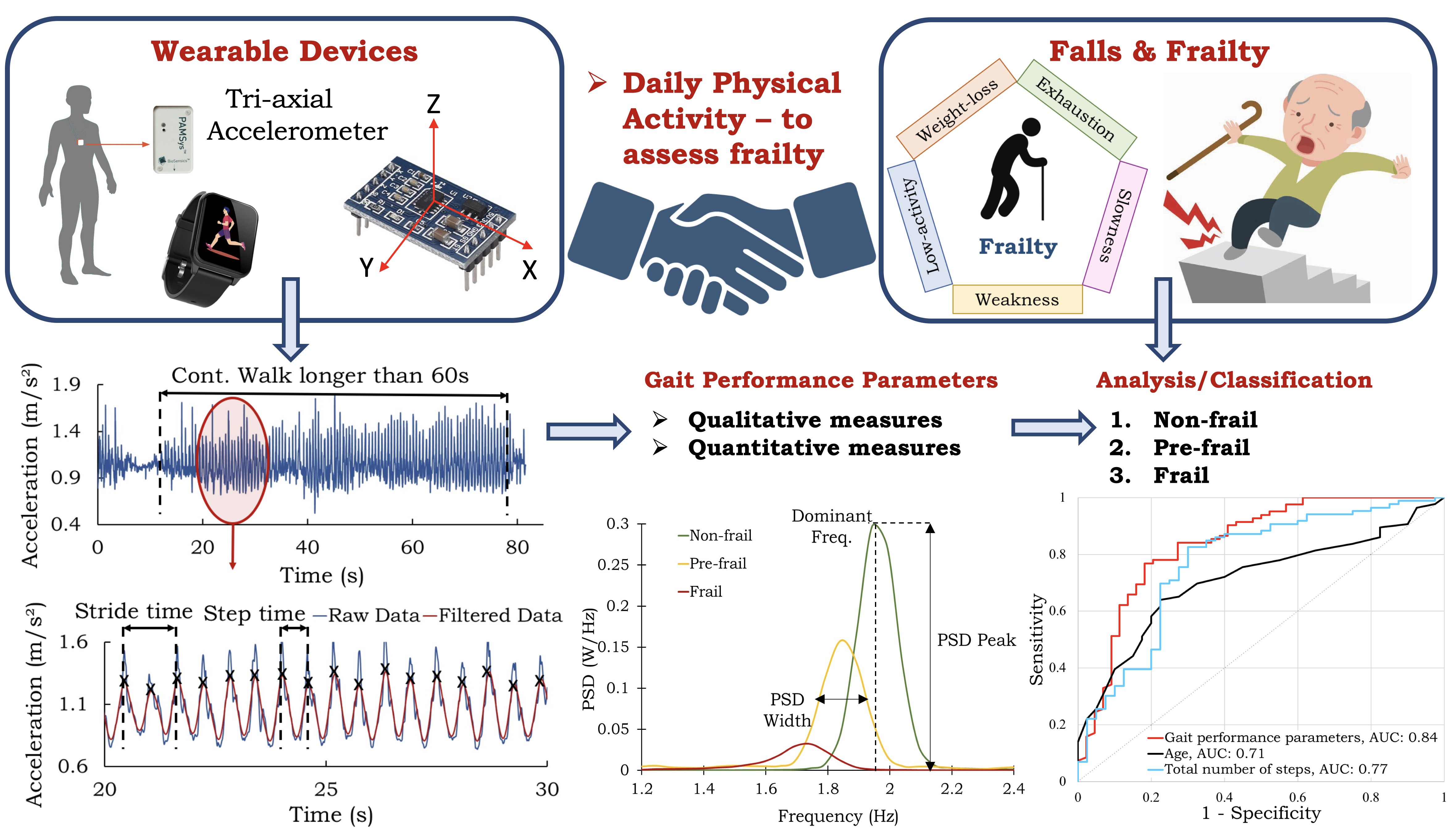Wearable devices and frailty assessment

|
Summary: Among the population who are 60 years or older, frailty is a highly recognized syndrome that is associated with decline in function and reserve across multiple physiologic systems. Frailty is characterized by a high vulnerability to adverse health outcomes such as disability, falls, hospitalization, institutionalization, and mortality. Reduction or impairment of physical function is a prime indicator of frailty, and frailty is one of the major reasons for falls in old age. Daily physical activity (DPA) data has been recently used to assess physical function, especially with the help of wearable sensor technology. Using wearable devices, it is possible to continuously measure DPA in the least intrusive manner and for longer durations of time in the participants’ natural environment. Despite technological advances, clinical adoption of wearable devices is still limited, due to lack of a clear connection between sensor-based data and frailty. Among several DPA, motion analysis of the trunk during walking is known to provide insights regarding neuromuscular deficits associated with frailty and aging. Using a combination of unsupervised DPA performance measurement and machine learning techniques, we will detect deficits in motor functions that are associated with frailty. For the older adults requiring continuous health monitoring, sensor-based wearables and remote monitoring will help eliminate the hassle of periodic commute to diagnostic centers, reduce the amount of recurring admissions to the hospital, and facilitate more efficient clinical visits with objective results. |